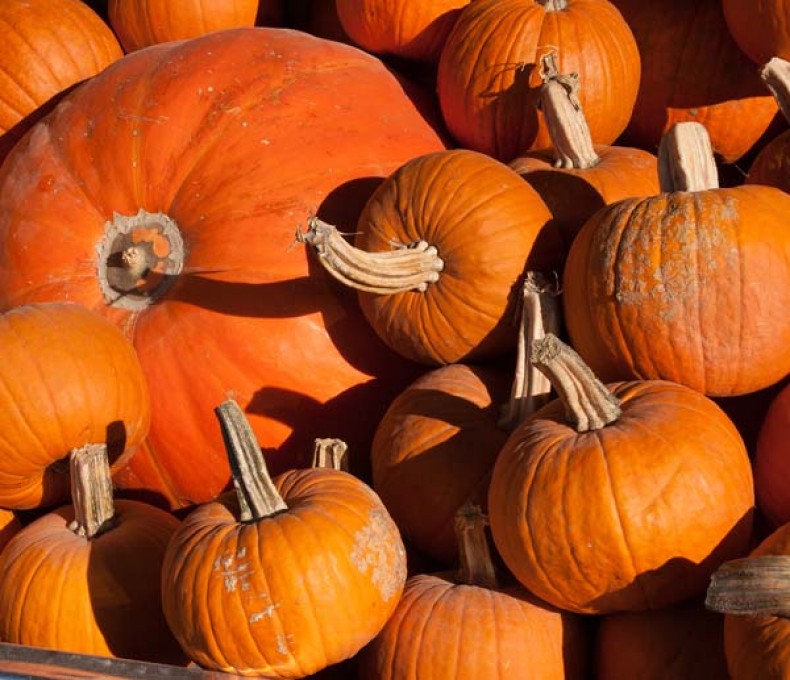The Great Pumpkin!
Plus garden to do's for October & November
By L.A. Jackson
Want to enjoy your Great Pumpkin well past Halloween? For proper preservation, a pumpkin must be relatively unblemished, meaning no knife cuts or soft spots. Also, it will last longer with 2 to 3 inches of stem still attached.
Before storing your pumpkin, wipe off any dirt with a dry cloth. Check on it occasionally and, if any mold appears, clean it with a cloth that has a dab of vegetable oil on it. A minor case of mold on the skin won’t harm the inside of the pumpkin — just don’t let it get out of hand. Mold can not only spread over the outer rind, but it can penetrate into the pumpkin, if not stopped.
For better storage, a pumpkin’s outer skin needs to be toughened up, and this curing process can be easily done if the jack-o’-lantern is used as a Halloween decoration in a dry area not in direct sunlight.
If your pumpkin is not going to automatically transform into a Thanksgiving season decoration, put it in a cool place after Halloween. Basements are ideal because they are constantly cool and, as a bonus, usually a little on the humid side. Humidity, in moderate amounts, helps to reduce shrinkage. A garage or closet could also work.
Don’t store the pumpkin directly on a concrete floor, as the chilly cement could damage the rind. Tuck it away on a shelf, cushioned in a bed of straw or clean rags, if possible.
A suitably stored pumpkin will usually last two to three months, meaning that this Halloween leftover can easily be reincarnated into fresh pumpkin pies for the Thanksgiving or even Christmas dessert table!
Garden To Do’s
October
- Tomato plants still producing? If you have green tomatoes remaining on the vine as the first frosts approach, pick them off, wrap each individually in a half sheet of newspaper and store in a cool, dry area. These tucked-away tomatoes will then slowly ripen in storage, so check on them occasionally.
- Plant flower seeds in the fall? Sure, especially if they are hardy annuals and biennials such as bells of Ireland, cornflower, foxglove, Johnny jump-ups, larkspur, pink poppy, snapdragons, sweet peas, sweet alyssum and Virginia stock that actually need the cold of winter to properly develop in time for next spring.
- Thinking about planting spring-flowering bulbs? Think big. Think like Texans do, because when it comes to such bulbs, for maximum potential in performance, the bigger their size, the better their springtime flower show.
- Migrating friendly flyers will appreciate it if you keep the bird feeder well stocked and the bird bath filled with fresh water.
November
- If you have been battling rust on your hollyhocks, clip off all the old stems now and discard them to help prevent the disease from overwintering and causing problems again next year.
- Plant tulip bulbs deep outdoors--the bases should be at least 6 to 7 inches in ground. This ensures not only a constant cold that is essential for these bulbs, but it will make it harder for voles and squirrels to find them.
- The beginning of the month is the time to plant paperwhite narcissus bulbs in pots in order to have them ready as blooming presents by this Christmas.
- Nesting season is over, so clean bird houses of old nests and any other debris
-
Share this story:



Comments (1)
Lynne Smith |
October 22, 2019 |
reply